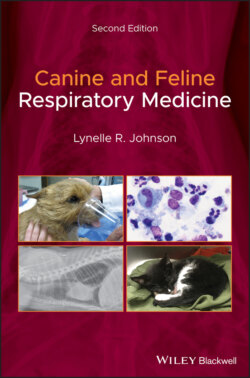Читать книгу Canine and Feline Respiratory Medicine - Lynelle Johnson R., Lynelle R. Johnson - Страница 18
Physical Examination
ОглавлениеIn a normal animal, breathing is quiet at rest. Stertor and stridor can be heard without the use of a stethoscope; however, in some instances, careful auscultation over the neck region is needed to confirm stridor. Increasing respiratory flow rate by gentle exercise can improve detection of stridor; however, panting must be discouraged. In the normal animal, auscultation over the larynx and trachea will reveal loud, hollow sounds that are heard equally on inspiration and expiration. Because upper respiratory noises are typically loud and can obscure lung sounds, auscultation of the larynx and tracheal region is recommended in all patients prior to thoracic auscultation to improve differentiation of upper from lower respiratory sounds, as well as to enhance detection of heart sounds and murmurs. This is particularly helpful in brachycephalic breeds (Figure 1.4).
Figure 1.4 Prior to thoracic auscultation, the laryngeal and cervical tracheal regions are ausculted to define upper airway sounds.
Brachycephalic breeds commonly have visible stenotic nares as part of the disease complex, and excessive oropharyngeal folds can be evident, although it is difficult to assess palate length in the awake animal due to breed conformation and presence of excessive froth in the back of the throat. Confirming an appropriate gag reflex is important in evaluating the patient with stridor, because swallowing abnormalities can potentiate aspiration. Finally, the presence of bilateral nasal airflow assists in ruling out the nasopharynx as the site for generation of stridor.
